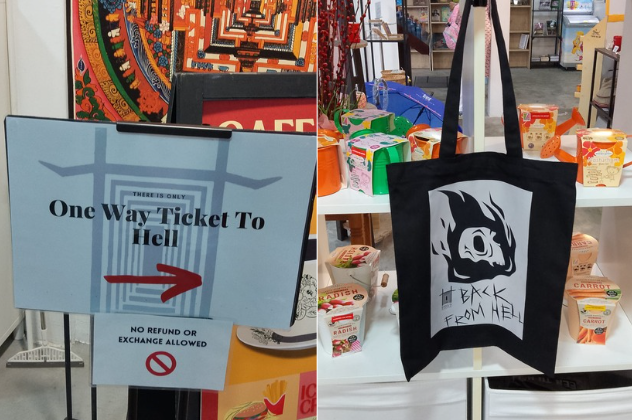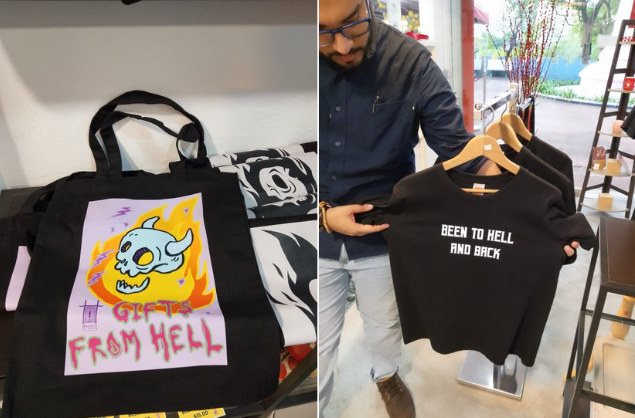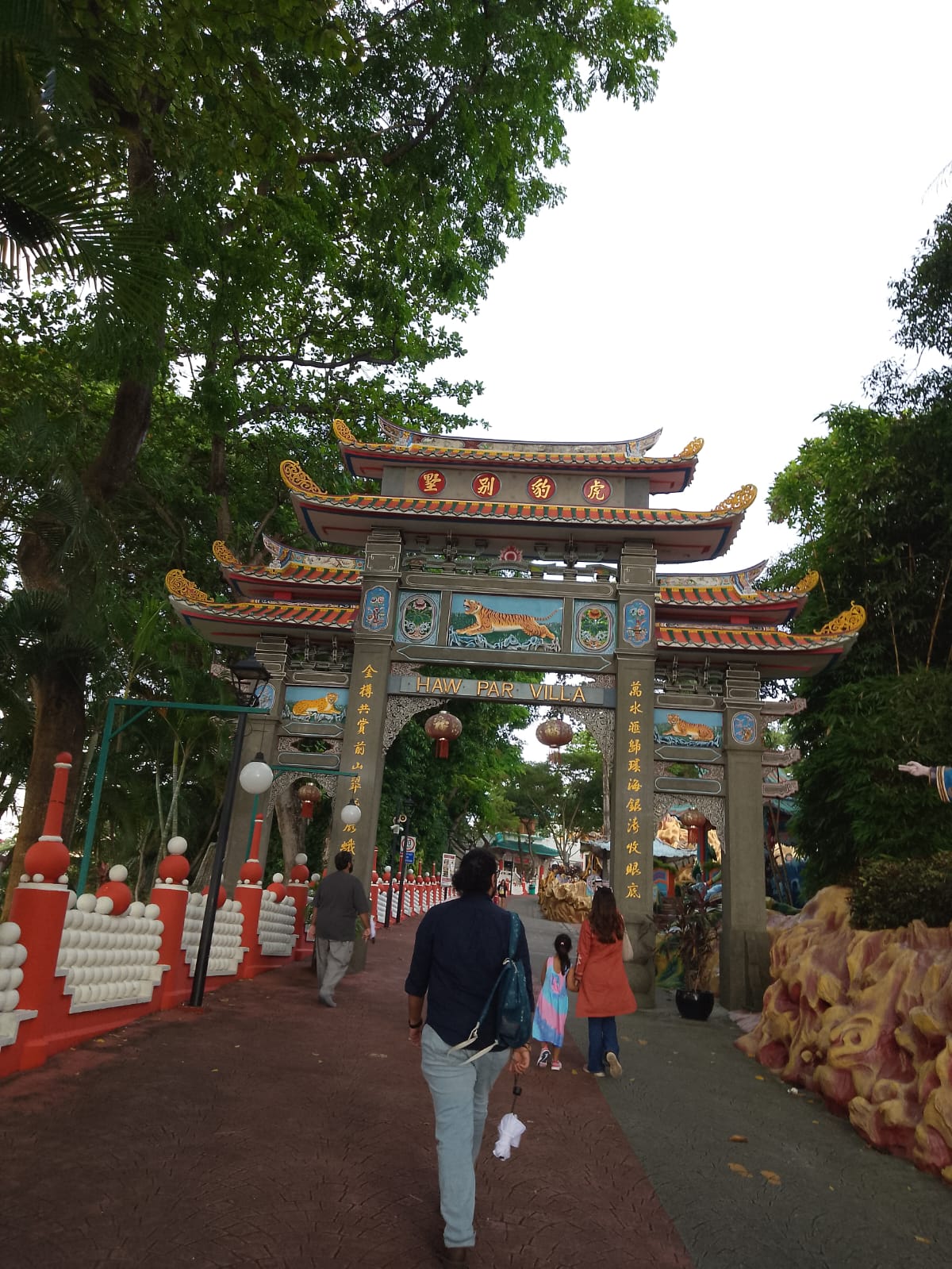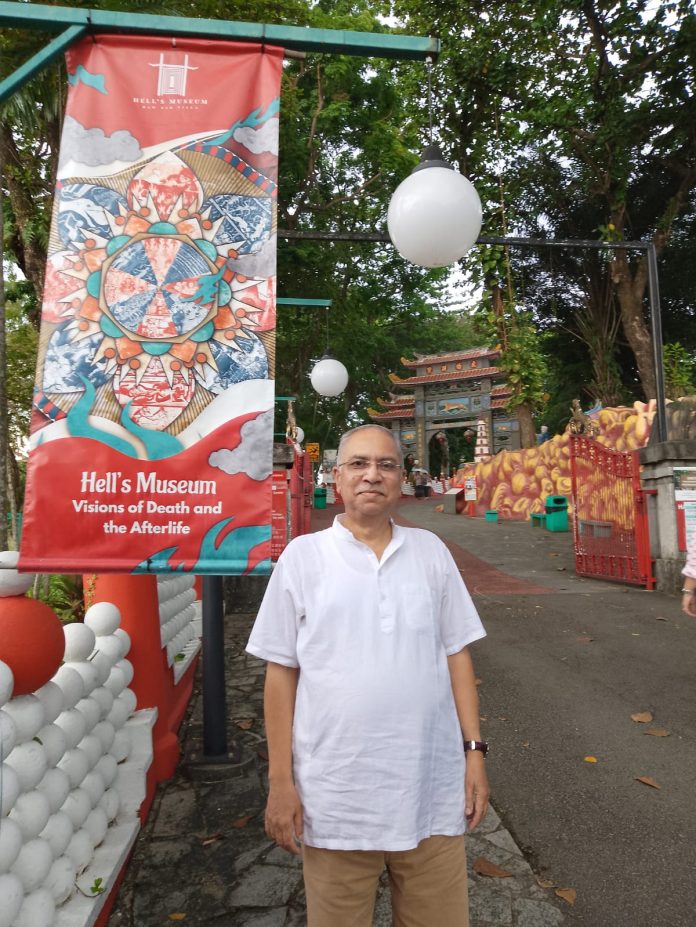– Shaheen Nazar
‘One Way Ticket To Hell’, thus reads a board at the entrance of a tourist attraction in Singapore. While every one of us wishes to go to Heaven, this entrance leads visitors to a place where no one wants to go. But it still has so much charm that people buy tickets to see it.
Welcome to the Hell’s Museum, the world’s first museum that presents perspectives of death and the afterlife across various cultures, religions and civilisations. It incorporates the Buddhist and Taoist concept of the infamous 10 Courts of Hell, and explains the philosophy behind this institution.
 In linear beliefs such as Islam, Christianity, Judaism and Zoroastrianism, you live, die, and go to the afterlife; in cyclical beliefs such as Hinduism, Buddhism, Jainism and Sikhism, you live, die, and eventually get reincarnated based on your past performance.
In linear beliefs such as Islam, Christianity, Judaism and Zoroastrianism, you live, die, and go to the afterlife; in cyclical beliefs such as Hinduism, Buddhism, Jainism and Sikhism, you live, die, and eventually get reincarnated based on your past performance.
Once inside the museum, you are confronted with the realities of death with comparative information on the Asians’ death rituals, funerary practices and various religious beliefs in the afterlife. The depictions are captivating.
First, a short video at the museum discusses the path of life, death and the afterlife, and compares different religions and their sources.
 After this academic encounter, you pass through 10 Courts of Hell, depicted through dioramas. In the First Court, the virtuous will be led over the ‘Golden Bridge’ to Paradise but most souls must submit to Hell’s penal system. The walk-through exhibit depicts, in agonising detail, the just punishments levied in different courts for different types of wrong-doing: Those found guilty of tax evasion, non-payment of rent and fraud will be pounded by a stone mallet; those escaping from prison and lacked respect towards elders will be punished by their chest sliced and their heart taken out; drug addicts, traffickers, robbers and agent provocateurs will be tied to red-hot copper pillar and grilled alive; money-lenders who charge exorbitant interest rates will be thrown onto a hill of knives; those who commit the crime of kidnapping, cheating and using curse words will be thrown on the tree of knives; those who possess pornography, misuse books, break rules and regulations and waste food will have their body sawn in half. Punishment also awaits those who use unfair means in exams and break traffic rules.
After this academic encounter, you pass through 10 Courts of Hell, depicted through dioramas. In the First Court, the virtuous will be led over the ‘Golden Bridge’ to Paradise but most souls must submit to Hell’s penal system. The walk-through exhibit depicts, in agonising detail, the just punishments levied in different courts for different types of wrong-doing: Those found guilty of tax evasion, non-payment of rent and fraud will be pounded by a stone mallet; those escaping from prison and lacked respect towards elders will be punished by their chest sliced and their heart taken out; drug addicts, traffickers, robbers and agent provocateurs will be tied to red-hot copper pillar and grilled alive; money-lenders who charge exorbitant interest rates will be thrown onto a hill of knives; those who commit the crime of kidnapping, cheating and using curse words will be thrown on the tree of knives; those who possess pornography, misuse books, break rules and regulations and waste food will have their body sawn in half. Punishment also awaits those who use unfair means in exams and break traffic rules.
 Finally, in the Tenth Court, the sinner’s fate is decided. Based on his deeds, he/she is sent to the world in a new incarnation. But before rebirth, the soul is offered the ‘Cup of Forgetfulness’ that ensures his/her loss of memory of the previous life.
Finally, in the Tenth Court, the sinner’s fate is decided. Based on his deeds, he/she is sent to the world in a new incarnation. But before rebirth, the soul is offered the ‘Cup of Forgetfulness’ that ensures his/her loss of memory of the previous life.
The graphic sculptures depict potential punishments in the afterlife, such as bodies on pitchforks, dismembered heads crying tears of blood and wild-eyed demons feasting on internal organs.
Visitors are expected to leave the museum with a deeper understanding of the various Asian cultural practices and religious beliefs surrounding death and the afterlife.
[Shaheen Nazar is a Delhi-based journalist. He was in Singapore recently]




